MOD 4 - Digital Detectors
1/33
There's no tags or description
Looks like no tags are added yet.
Name | Mastery | Learn | Test | Matching | Spaced |
|---|
No study sessions yet.
34 Terms
Digital Radiography vs. Digital Imaging
radiography = process of x-ray beam digitization in the detector
imaging = digital signals → electronic signals that are displayed on the monitor
Classification of Digital Imaging
CR
DR (Direct Radiography)
Flat Panel (Mammography)
IDR (Indirect)
Flat Panel (C-arm)
Non-Flat Panel (Siemen’s Detectors)
Scanned Projection Radiography (CT)
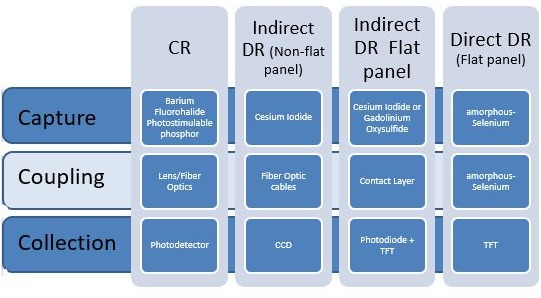
Components of a Digital Detector
Capture: x-ray → light/electrical signal
Coupling: transmit the signal into the collection element
Collection: collects and converts the signal into electronic/analog signal
ADC
Which capture element structure increases spatial resolution
A columnar structure (CsI) allows for less light spread, therefore it provides better spatial resolution
Indirect non flat panel detectors are typically found within
Image Intensifier based fluoroscopy machines
CCC Elements of Indirect Non-flat Panel
Capture:CsI
Coupling: fiber optic cables
Collection: Charge Coupled Devices (CCD)
CCD advantage
highly sensitive to low light, responds to very dim and very bright lights therefore has a wide dynamic range
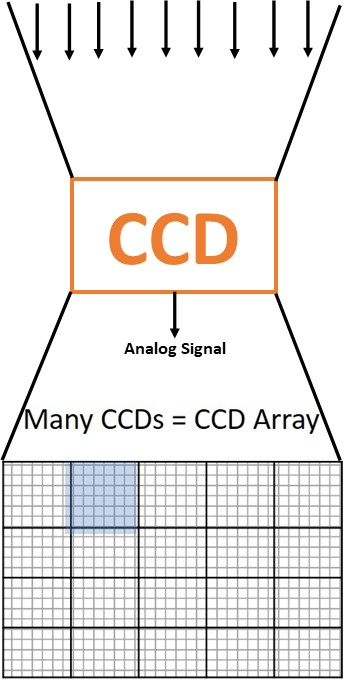
CCC Elements of Indirect Flat Panel
Capture: CsI or GaO
Coupling: contact layers
Collection: photoiodide a-Si + TFT or CCD
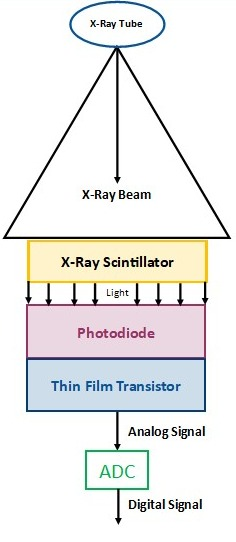
TFT’s function
controls when each DEL sends it's information; the info is stored in the top-thin layer of the TFT called the storage capacitator
CCC Elements of Direct Flat Panel Detectors
Capture and Couple: a-Se which is the photoconductor layer
Collection: TFT
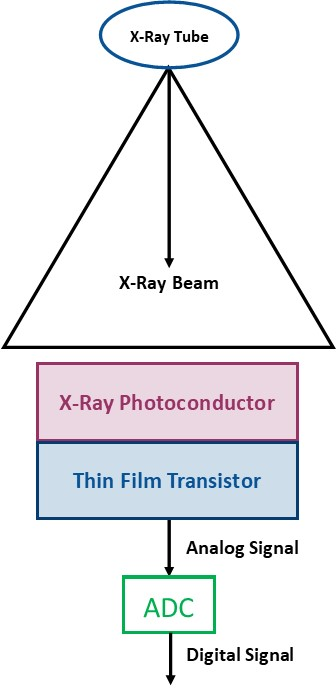
Pixel Fill Factor
where the capture element makes up 80% of the pixel space, and the rest 20% are the capacitators and TFT where it isn’t able to respond to scintillator created light
MEANING, the SR increases with decreased pixel size ONLY if the TFT and Capacitator size are created smaller
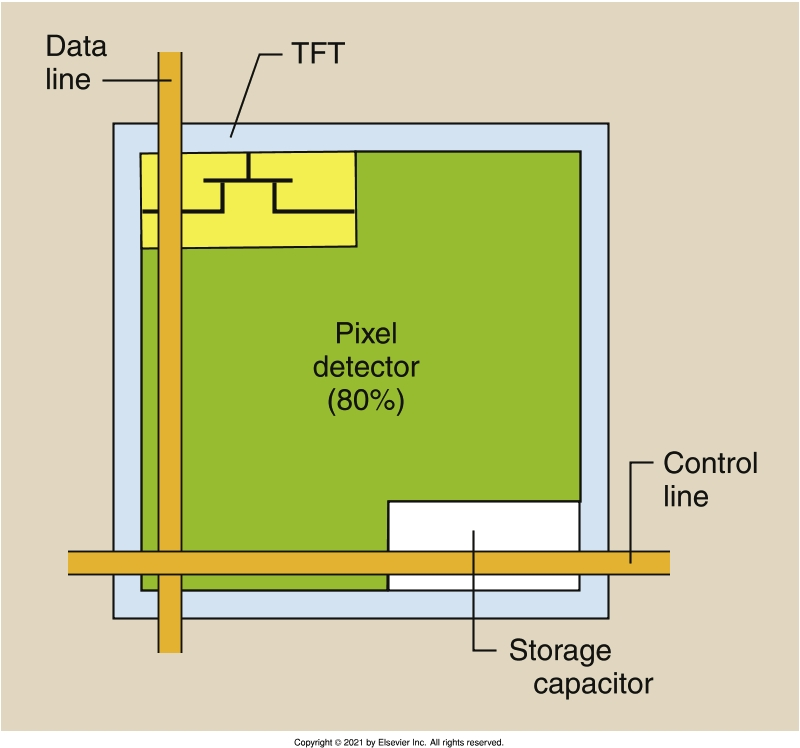
Pixel Pitch
the distance between each central point of two adjacent pixels in a detector array
Indirect vs. Direct Digital Systems
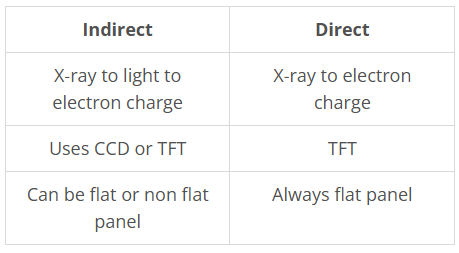
Indirect Scintillation Layer Differences
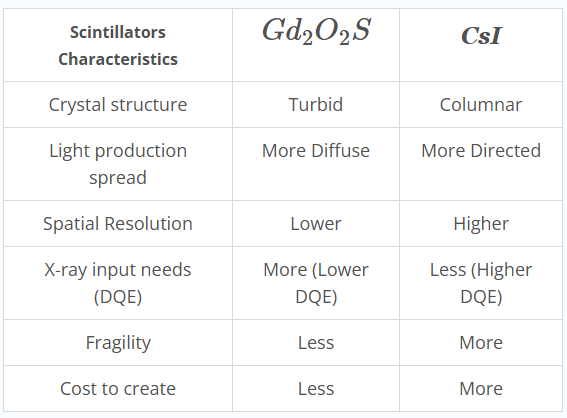
General System Type Comparisons
best resolution
fastest and slowest readout speed
best DQE
most and least cost
best resolution = direct flat
fastest = indirect flat (a-Si TFT), slowest = direct flat
best DQE = direct flat
most cost = direct flat, least cost = indirect CCD
Principal of Digital Fluoro (DF)
increased acquisition speed and the ability to post-process digital images
Interrogation Rate
time required for the generator to activate the tube to the desired exposure = acquisition rate
Extinction Time
time required to terminate the exposure
Duty Cycle
The fraction of time that the tube is activated
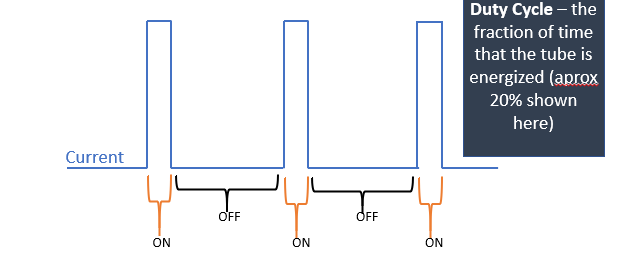
Types of DF Receptors
CCD
Flat Panel DR receptors
CCD DF
coupled to the output phosphor either directly or with fiberoptics, the CCD linear response improves IQ compared to conventional fluoro
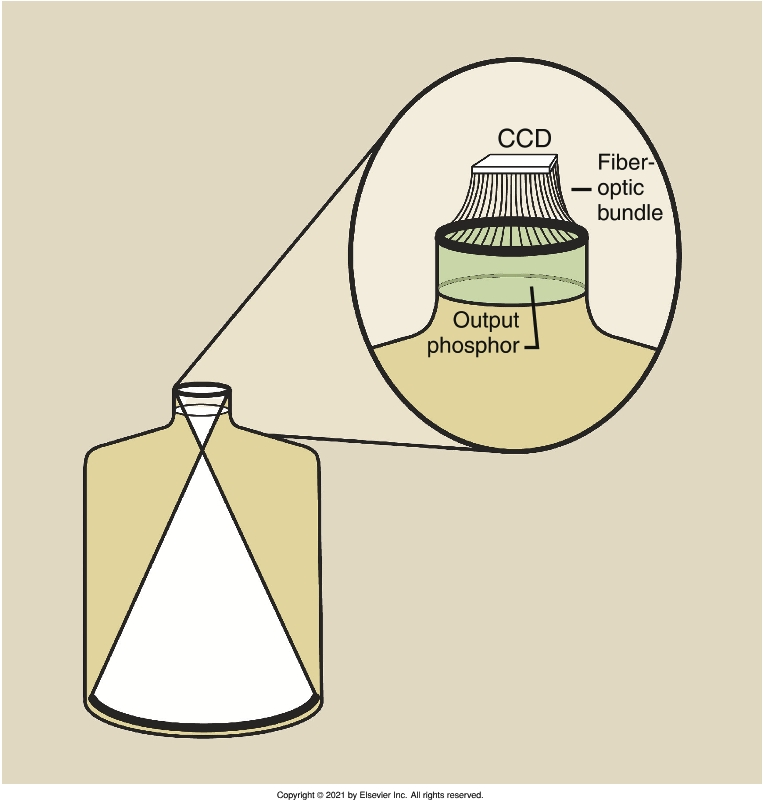
Advantages of FPD over II Fluoroscopy
improved image accuracy
consistent image quality across the whole image
more compact and lighter
High Detector Quantum Efficiency (DQE) → fast duty cycles
FPD C-arm
allows for 3D multiplanar reconstructions to be performed during a surgery
beneficial for surgeons to confirm alignment of bone fragments and fixation hardware
Magnification Mode in FPD Fluoroscopy
reduces the amount photon interactions for each detector element → increased image noise → increased mA
contrast and spatial resolution relationship
while CR is independent of SR, SR increases with increased CR
higher spatial frequency =
more line pairs within one mm
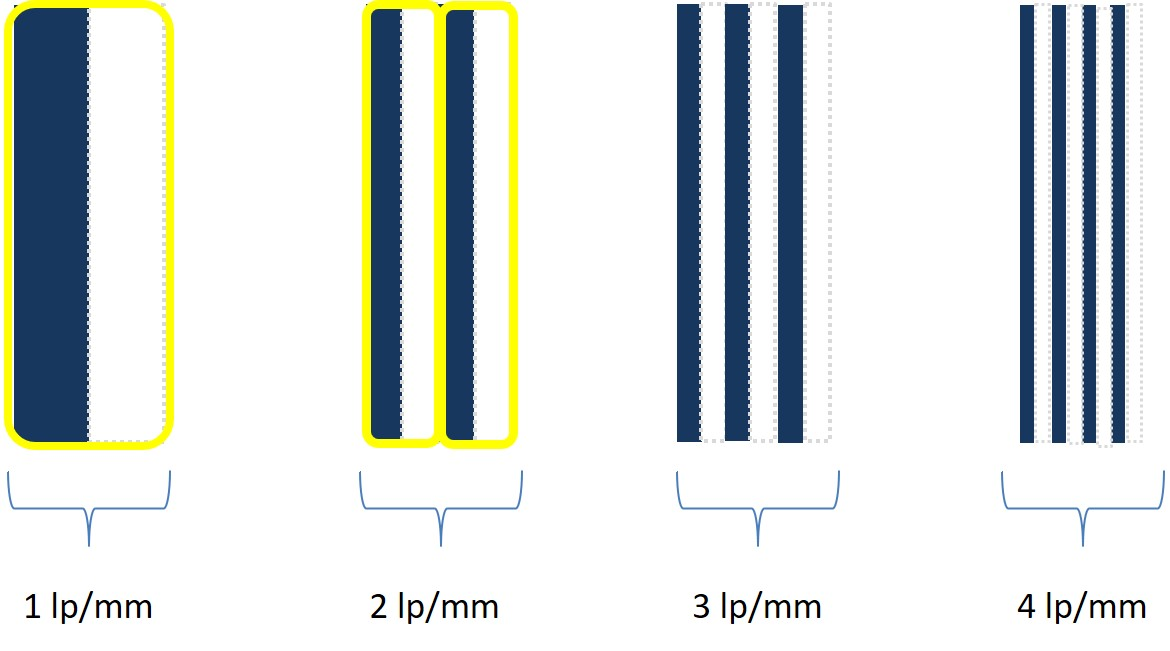
Modulation Transfer Function
detector's ability to accurately detect and display objects true to life
MTF = 1, if system can perfectly transfer object characteristics to the image that we view, BUT impossible and all MTF < 1
the MTF as the objects imaged get smaller
MTF rate decreases when object becomes smaller then the pixel/detector element size
Exposure Latitude
the ability to produce images at different exposure values all with good/same quality
higher dynamic range = wider exposure latitude
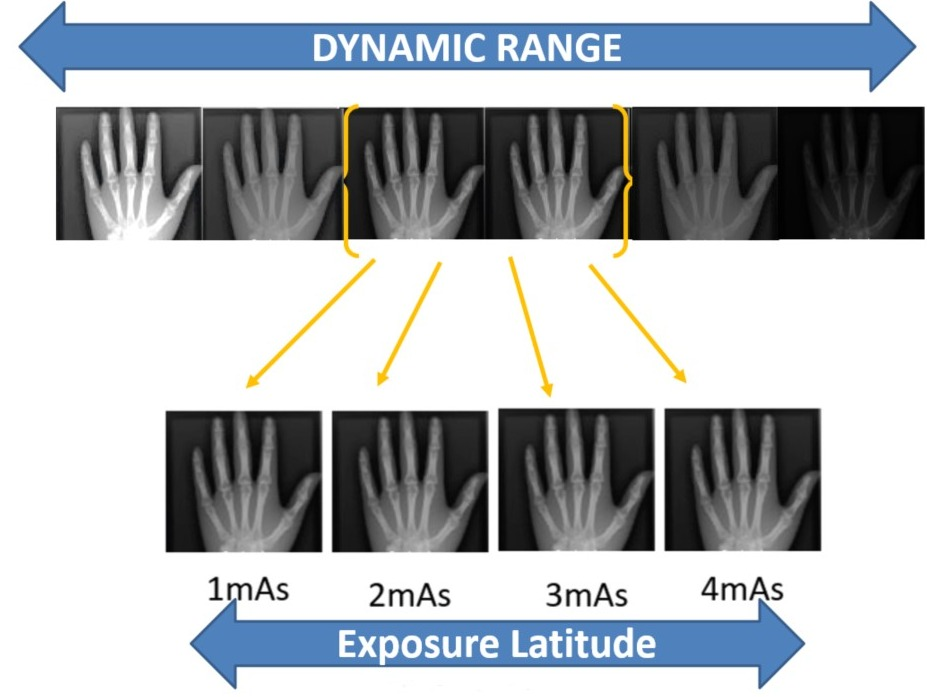
Detective Quantum Efficiency (DQE)
the detector absorption efficiency for a wide range of photon energies, therefore high DQE would mean less dose required to create images
DQE 1 = 100% of photons detected
increased kV = ?DQE
decreased DQE
which detector material has the highest DQE
a-Se used in Direct DR
Digital Image Lag
previous image residues shown when the capacitator fails to reset to zero